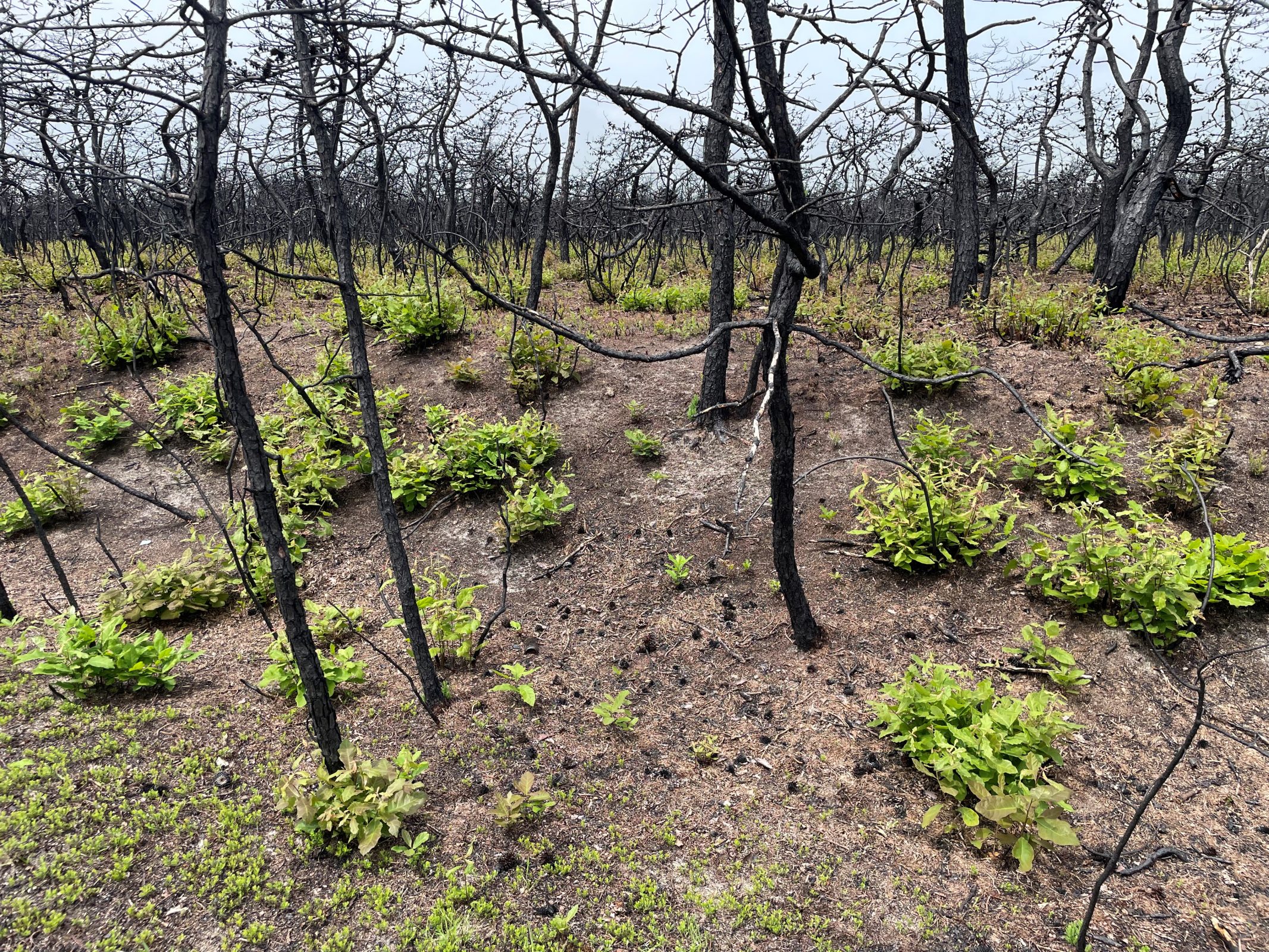I remember well the television schedule for the Sunday nights of my childhood – first was the half hour show “Mutual of Omaha’s Wild Kingdom” which helped foster my interest in nature and animals, followed by the “Walt Disney Show”. It was capped by “Bonanza” with its memorable musical beginning in which the paper map depicting the geographic spread of the Bonanza ranch goes on fire. The burning map was cool but I knew the danger wildfires posed to nature because between Wild Kingdom and Disney there was, regularly, a Smokey Bear commercial reminding the viewer that “Only you can prevent wildfires”. The juxtaposition between the beginning of Bonanza and Smokey’s sobering commercial was striking to a young and impressionable mind.
So, too, was it striking when I first learned that Smokey was at least partially wrong – that wildfire plays an instrumental role in creating and maintaining natural places and landscapes. Fire, as Smokey makes clear, is a bad thing for living systems. But for the Long Island Pine Barrens I quickly learned, the ecosystem is maintained, indeed dependent upon fires which in its absence the Barrens would slowly disappear, being swallowed by other types of forests. I saw the value of fire first hand when touring the recently burned areas of the Dwarf Pine Plains, two days after the “S’mores” fire swept through (the fire was reportedly started by a family making s’mores in their backyard over a fire that got out of control). The Dwarf Pine Plains consists of several thousand acres in which pitch pine, the namesake tree of the Pine Barrens, is dwarfed by a combination of environmental factors and genetics. Here, the pines are chest to head high with little to no layering unlike in other areas of the Pine Barrens where a tree canopy rises over a shrub layer. Since there is little in the way of stratification there’s a very good chance that any fire moving through is going to “crown out”, i.e. reach the canopy and the pine cones holding the precious seeds for a next generation of trees. If the dwarf pines had “normal” open cones like tall pitch pines have, all seeds would be destroyed. So, the dwarf pines evolved a closed or serotinous cone trait, in which fire is required to open the cones to allow for the release of seeds instead of the normal process of seed shed with open cones.
And wow do they release seeds – everywhere I looked on my stroll through the burned landscape there was twirling and fluttering going on, as what I could imagine were collectively tens of thousands of pine seeds, were released from their charred cones slowly descending to the ashen ground. Seeds landing in just the right places will germinate and grow into new dwarf pines.
Serotinous cones are one of four adaptations pitch pine has to survive in a fire climax ecosystem. Others include thick bark which insulates and protects the living tissue beneath and two types of buds – epicormic and basal crook buds – the former “laying upon the corm” or the skin (actually the bark) and the latter at the bottom of a crook or bend that seedling and sapling pines possess. Both will elongate into new branches and trunks, respectively, if the branches and main trunk are killed by fire, quickly allowing for the plant to get back into the business of photosynthesis.
Now that we suppress fires caused by carelessness or weather, if fire is going to continue to play its vital role in maintaining the unique character of the Pine Barrens it’s going to have to happen through “prescribed burns” – fires intentionally set by foresters under a careful prescription. State and local governments have begun to utilize prescribed burns more frequently, mostly still in grasslands in the Barrens. For fire to provide its full suite of ecological benefits these burns will need to become commonplace, not only in the grasslands but throughout the forest communities that make up the mosaic of the Long Island Pine Barrens. A robust prescribed burn program, conducted at a scale necessary to maintain the ecosystem, presents one of the great stewardship challenges to all that care about this remarkable landscape.
By John Turner, Long Island Pine Barrens Society Founder


